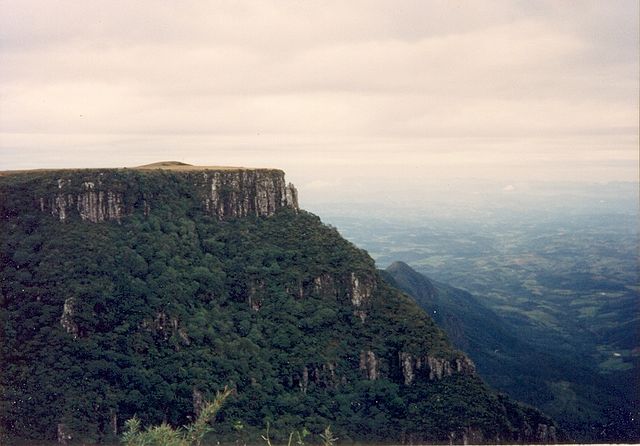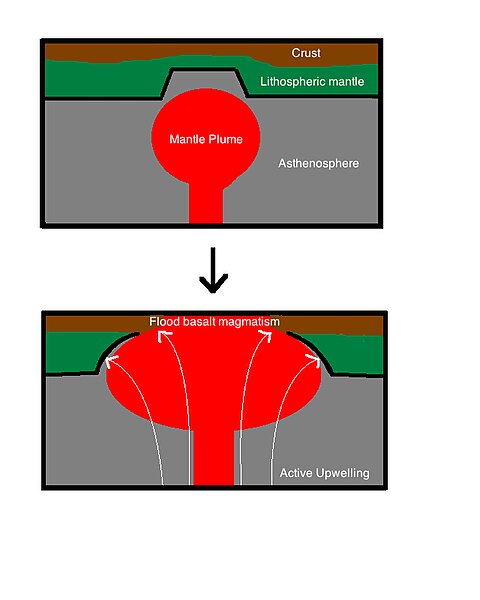A flood basalt is the result of a giant volcanic eruption or series of eruptions that covers large stretches of land or the ocean floor with basalt lava. Many flood basalts have been attributed to the onset of a hotspot reaching the surface of the Earth via a mantle plume. Flood basalt provinces such as the Deccan Traps of India are often called traps, after the Swedish word trappa, due to the characteristic stairstep geomorphology of many associated landscapes.
Moses Coulee in the US showing multiple flood basalt flows of the Columbia River Basalt Group. The upper basalt is Roza Member, while the lower canyon exposes Frenchmen Springs Member basalt
Ethiopian Highlands basalt
Parana traps
Plume model of flood basalt eruption
Basalt is an aphanitic (fine-grained) extrusive igneous rock formed from the rapid cooling of low-viscosity lava rich in magnesium and iron exposed at or very near the surface of a rocky planet or moon. More than 90% of all volcanic rock on Earth is basalt. Rapid-cooling, fine-grained basalt is chemically equivalent to slow-cooling, coarse-grained gabbro. The eruption of basalt lava is observed by geologists at about 20 volcanoes per year. Basalt is also an important rock type on other planetary bodies in the Solar System. For example, the bulk of the plains of Venus, which cover ~80% of the surface, are basaltic; the lunar maria are plains of flood-basaltic lava flows; and basalt is a common rock on the surface of Mars.
Basalt
QAPF diagram with basalt/andesite field highlighted in yellow. Basalt is distinguished from andesite by SiO2 < 52%.
Vesicular basalt at Sunset Crater, Arizona. US quarter (24mm) for scale.
Columnar basalt flows in Yellowstone National Park, USA








